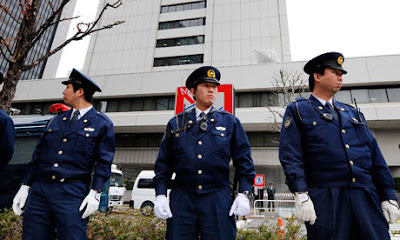India's food inflation rate eased slightly in the week ended March 26, but fell short on market expectations of a bigger relief from sticky prices.

The year-on-year food inflation rate fell to 9.18% from 9.50% in the previous week, according to data issued Thursday by the Ministry of Commerce and Industry. However, the index of food articles was up 0.4% to 179.5 during the week, from 178.7 in the previous week.
The data will fuel worries that inflationary pressures won't ease sharply soon, firming expectations of a rate increase in May when the central bank meets to review monetary policy.
Indian government bonds slipped after the data, with the most-traded 8.08% paper due in 2022 falling to 100.09 rupees ($2.28) from 100.13 rupees before.
"Inflation is showing signs of downward stickiness and the RBI [Reserve Bank of India] will have to continue increasing rates to bring it under control," said Manoranjan Sharma, chief economist at Canara Bank.
Mr. Sharma said rising crude oil prices will further stoke inflationary pressures, adding to the urgency to tighten monetary policy.
"If oil prices continue to rise the government at some point of time will have to pass on the burden to consumers," which will push up inflation, he added.
Mr. Sharma expects the RBI to increase its two main policy rates by 25 basis points at the next review on May 3 and by 50-75 basis points in 2011.
The RBI has raised its borrowing rate by a cumulative 2.25 percentage points and the lending rate by 1.75 percentage points since March 2010, as it grapples with intolerably high inflation driven by supply shortages and rising demand pressures.
The general inflation rate was 8.31% in February. The central bank has raised its inflation estimate for the end of March thrice, the last time to 8% from 7% at its March 17 policy review.
Economists say the central bank has been slow in anticipating price pressures and that inflation will likely overshoot the 8% projection.
Bank of Baroda Chief Economist Rupa Rege Nitsure expects inflation to accelerate to 8.9% in March, contrary to the RBI's view.
Thursday's data also showed the index for primary articles rose 0.5% to 188.2 in the week to March 26. It was little changed at 12.97% during the week on an year-on-year basis. The fuel products index was unchanged from the previous week at 158.5.
The data will fuel worries that inflationary pressures won't ease sharply soon, firming expectations of a rate increase in May when the central bank meets to review monetary policy.
Indian government bonds slipped after the data, with the most-traded 8.08% paper due in 2022 falling to 100.09 rupees ($2.28) from 100.13 rupees before.
"Inflation is showing signs of downward stickiness and the RBI [Reserve Bank of India] will have to continue increasing rates to bring it under control," said Manoranjan Sharma, chief economist at Canara Bank.
Mr. Sharma said rising crude oil prices will further stoke inflationary pressures, adding to the urgency to tighten monetary policy.
"If oil prices continue to rise the government at some point of time will have to pass on the burden to consumers," which will push up inflation, he added.
Mr. Sharma expects the RBI to increase its two main policy rates by 25 basis points at the next review on May 3 and by 50-75 basis points in 2011.
The RBI has raised its borrowing rate by a cumulative 2.25 percentage points and the lending rate by 1.75 percentage points since March 2010, as it grapples with intolerably high inflation driven by supply shortages and rising demand pressures.
The general inflation rate was 8.31% in February. The central bank has raised its inflation estimate for the end of March thrice, the last time to 8% from 7% at its March 17 policy review.
Economists say the central bank has been slow in anticipating price pressures and that inflation will likely overshoot the 8% projection.
Bank of Baroda Chief Economist Rupa Rege Nitsure expects inflation to accelerate to 8.9% in March, contrary to the RBI's view.
Thursday's data also showed the index for primary articles rose 0.5% to 188.2 in the week to March 26. It was little changed at 12.97% during the week on an year-on-year basis. The fuel products index was unchanged from the previous week at 158.5.




